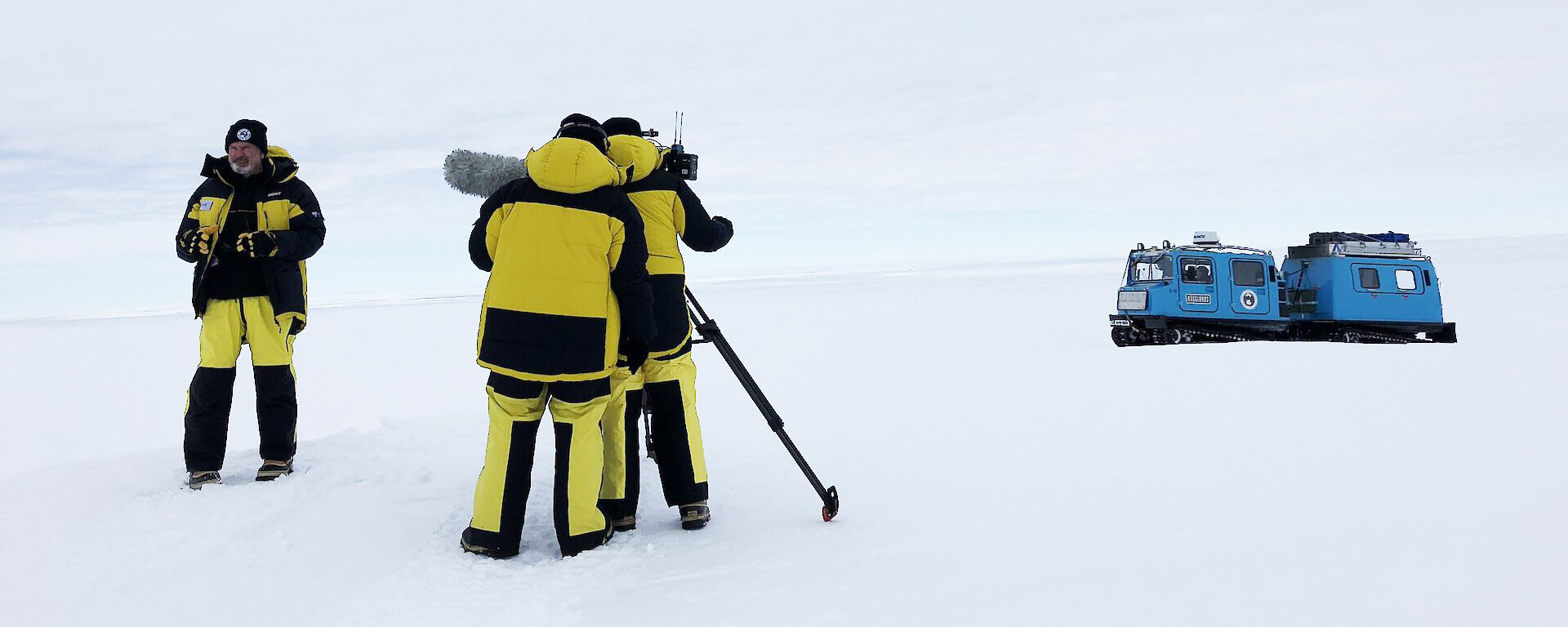Antarctic video gallery
Seeding Southern Clouds
Video transcript
Jared Lewis (Uni of Melbourne) — The AIRBOX is a great way of storing many instruments and all in one co-located area that we can move round wherever we need to make these measurements.
Dr Robyn Schofield (Uni of Melbourne) — We want to know how many there are, we want to know how large they are, we want to know how reflective they are.
Dr Robyn Schofield (Uni of Melbourne) — Over the Southern Ocean, a major source of aerosol, generally about 70% is sea salt. The tops of the waves get sheared off. That’s a major source of aerosol. Then they go on to form clouds. We wouldn’t have any clouds actually, without aerosols forming them.
Dr Robyn Schofield (Uni of Melbourne) — It’s a very clean and pristine environment over the Southern Ocean, and so the clouds that form, form really big droplets. And we get what’s called super saturation, so they’re both ice and water coexisting, so they are unusual.
Jared Lewis (Uni of Melbourne) — Helping us really narrow down the uncertainty in our climate model projections over the Southern Ocean. That’s a tremendously important thing.
[end transcript]
Dr Nick Gales: a unique Antarctic journey
Video transcript
Dr Nick Gales, Director, Australian Antarctic Division:
I was incredibly fortunate that they were looking for a vertebrate ecologist to do some work on elephant seals that required administering anaesthesia, so my veterinary background was really a great strength for my application, I was very lucky.
Knowing now how important Antarctica is and then knowing what the consequences of climate change are to Antarctica and then looping back those influences on us is a key part of understanding what’s coming down in the future.
This whale finally surfaced and this huge wall of whale came up alongside me and I had no idea where on the body I was. It just kept passing me and I didn’t shoot the tag. I stood there completely dumbfounded as this animal just swam past us and looked. Then the driver was saying, “Why didn’t you shoot?” “I didn’t know where!”
[end transcript]
Natural born krillers video
Video transcript
The Aurora Australis returned from Antarctica today with some very special passengers…
25 expeditioners, and ten thousand young Antarctic krill.
Krill are collected once a year in the Southern Ocean.
Once in Hobart, 200 kilos of party ice keep the krill cool at zero degrees.
Their new home is a unique lab at the Australian Antarctic Division.
Here we learn how they feed, grow, and deal with ocean acidification.
These krill are around a year old, and can live for up to ten years.
[end transcript]
Super-cooled clouds
Video transcript
Australian Antarctic Division Principal Research Scientist
Dr Andrew Klekociuk
It uses a laser beam to measure the height and the properties of clouds. The thing that we're most interested in is whether clouds are liquid or solid, whether they consist of water droplets or ice crystals.
That means that they influence the radiation coming from the sun in a different way to what we see in the Northern Hemisphere
When we calculate what the temperature of the Southern Ocean is in our model, we find it’s higher than we actually observe. We think that the liquid clouds in the Southern Hemisphere are implicated in causing that difference.
[end transcript]


